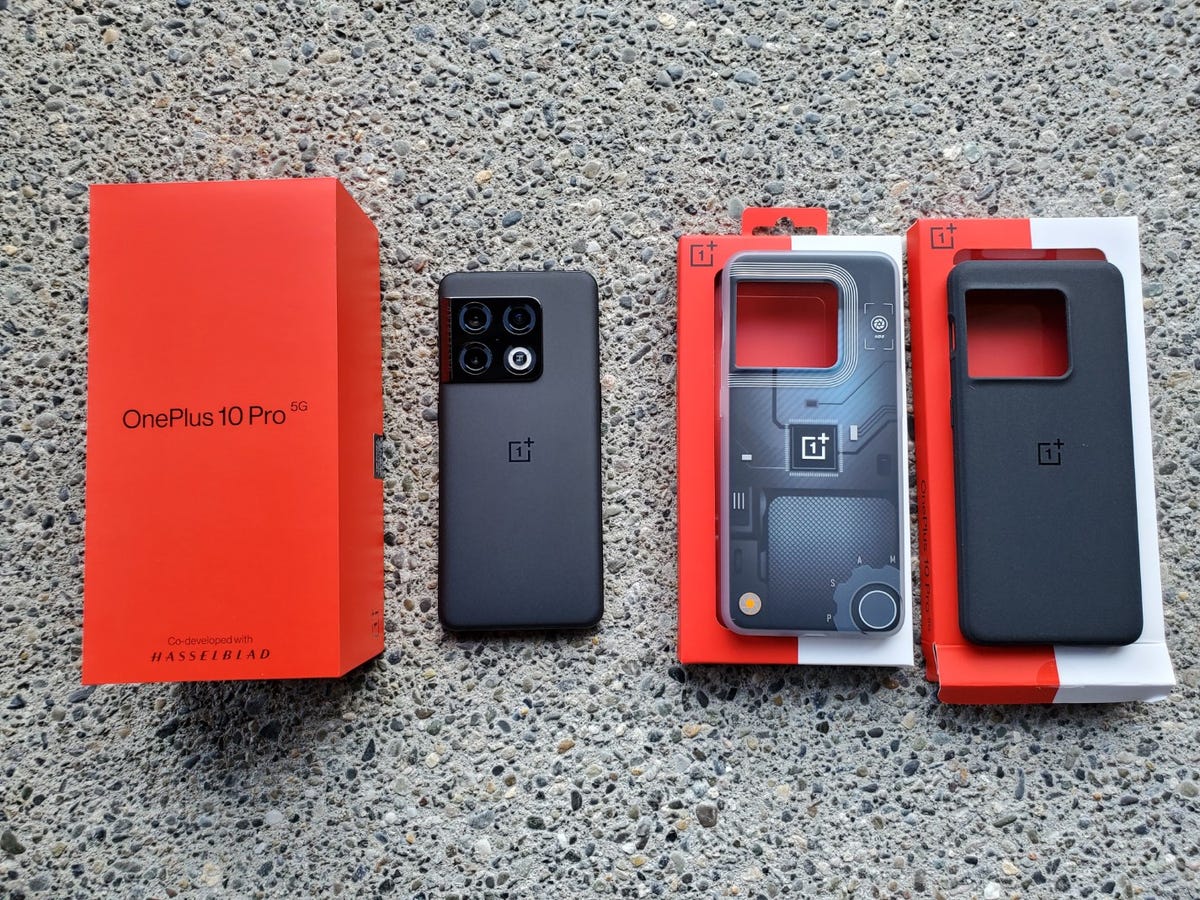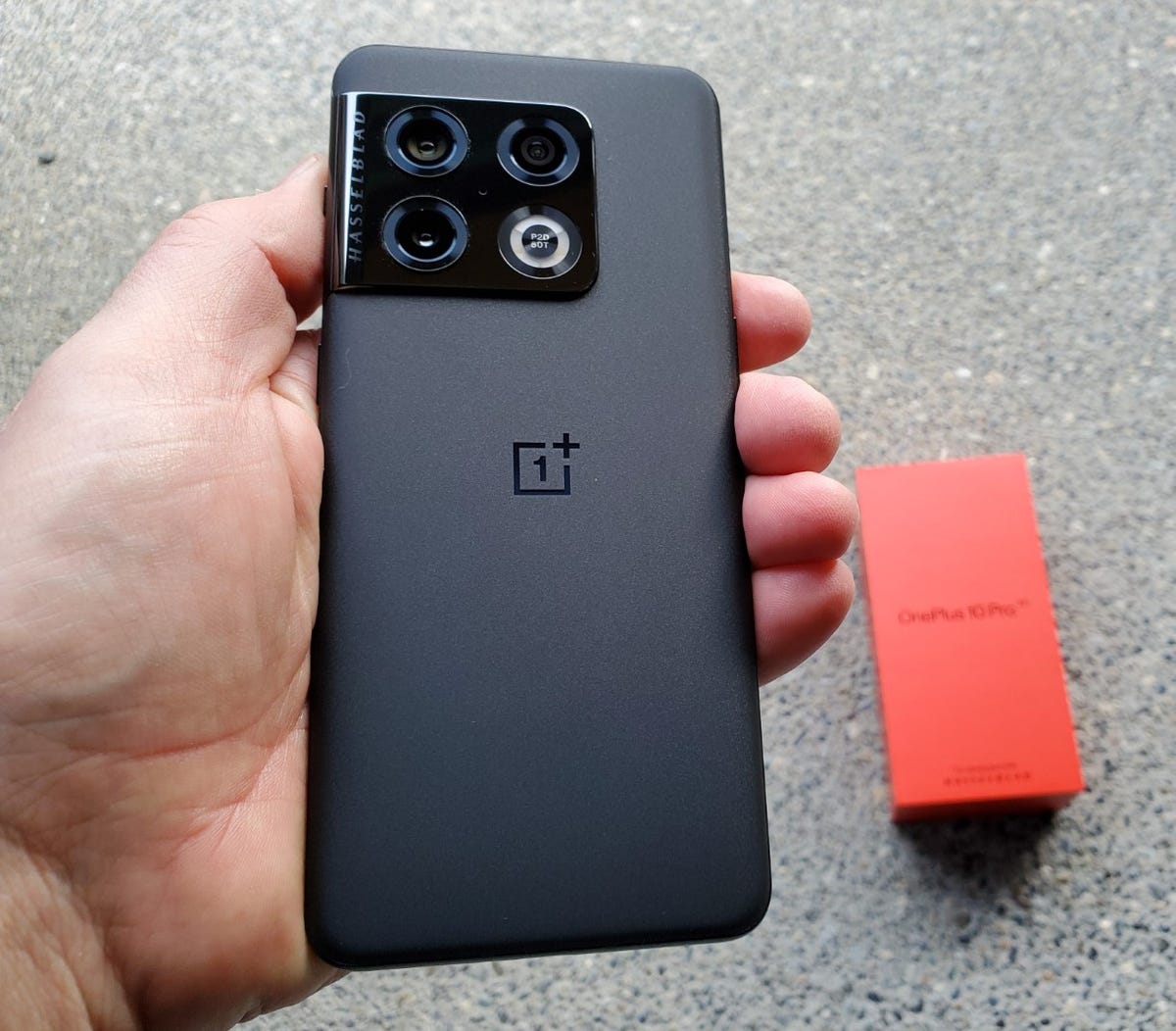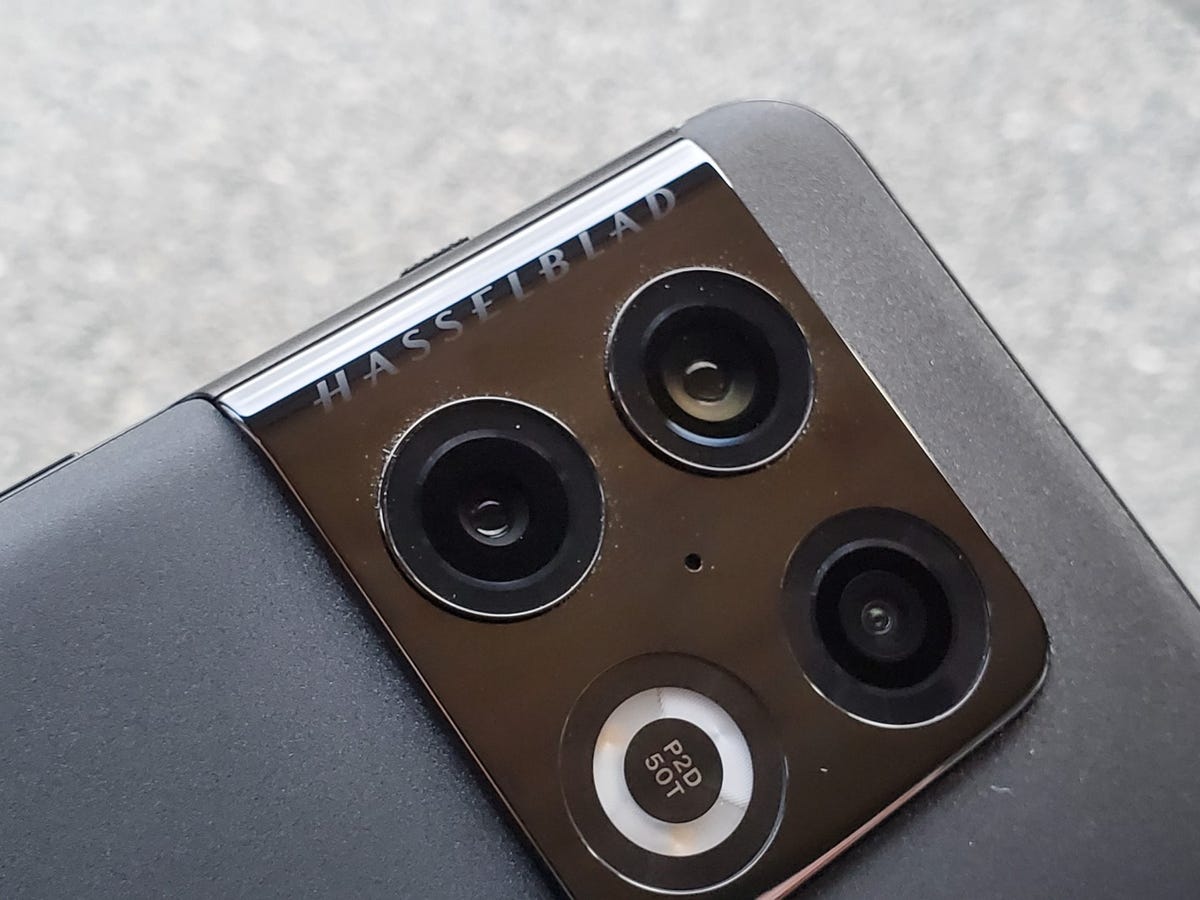Shortly after CES, OnePlus announced the OnePlus 10 Pro with availability only in China starting in mid-January. Today, OnePlus announced a wider release of the device, including pre-orders in the US and Canada today with sales starting on 14 April.
We’ve had the device in hand for a week, and a full review will be coming from ZDNet next week. It will be available in North America in Volcanic Black and Emerald Forest with a single 8GB RAM and 128GB internal storage option for $899US and $1149CAD. We have the Volcanic Black North American model in hand for testing.

Matthew Miller/ZDNet
With the $899 price in the US, the first flagship competitor that comes to mind is the Google Pixel 6 Pro at the same price. While the tale of the tape is similar between these two devices, we will also offer some feedback on why one may be better than the other, depending on what is most important to you.
Also: Best Android phone: Expert picks with some surprises
Android smartphone users may also look to the Galaxy S22 Plus with a starting price of $999.99 or even the S22 Ultra at $1,099.99. Samsung phones are very powerful and full of useful features, but the OnePlus 10 Pro and Google Pixel 6 Pro appeal more to the tech and smartphone enthusiast who enjoys a more stock Android experience.

Matthew Miller/ZDNet
Tale of the tape
Specifications don’t provide the complete picture regarding the capabilities of a smartphone, but they are useful for comparison purposes and to provide you with an indication of what each device offers.
| Feature | OnePlus 10 Pro | Google Pixel 6 Pro |
| Display size | 6.7 inches | 6.7 inches |
| Processor | Snapdragon 8 Gen 1 | Google Tensor |
| Dimensions | 163 x 73.9 x 8.55mm | 163.9 x 75.9 x 8.9mm |
| Weight | 201g | 210g |
| RAM | 8GB | 12GB |
| Internal storage | 128GB | 128/256/512GB |
| Battery capacity | 5000mAh | 5003mAh |
| Rear cameras | Four: 8MP tele (3.3x), 48MP wide, 50MP ultra-wide | Three: 48MP tele (4x), 50MP wide, 12MP ultra-wide |
| Front cameras | 32MP | 11.1MP |
| Other | 65W fast charging, best haptics, shoots in 10-bit color | Camera software |
Both phones incorporate Gorilla Glass Victus material, have an adaptive 120MHz refresh rate display (the OnePlus 10 Pro adapts from 1-120Hz while the Pixel 6 Pro is 10-120Hz), wireless charging, IP68 dust/water resistance, wireless powershare capability, and 5G.
Why choose the OnePlus 10 Pro?
I spent a couple of weeks with the Google Pixel 6 Pro but returned it because the cellular reception was terrible, battery life did not impress, charging was too slow for me, and the fingerprint sensor was pretty terrible. Google improved some of these issues with updates but also has broken issues with other updates, and the inconsistency in managing a new phone with the first Google Tensor processor has shown the phone is not reliable enough for me to get work done. Spotty Wi-Fi and cellular performance is a non-starter for my needs.
OnePlus and Samsung have shown to be the best at cellular performance in my testing, and that continues to be true with the OnePlus 10 Pro. My commuter train moves along the tracks on the outskirts of towns, and the OnePlus 10 Pro has stayed connected for my entire commute with solid speed and 5G performance.

Matthew Miller/ZDNet
While it has only been a week, I’m also seeing better battery life than I have seen on a OnePlus phone in quite a while. In addition, the North American model has a 65W charger and USB-C cable in the box so that you can charge it up very quickly. 50W wireless charging and wireless powersharing are also supported on the OnePlus 10 Pro.
There is a lot to unpack when it comes to the camera of the OnePlus 10 Pro, thanks to the powerful and capable software. For point-and-shoot results, the Google Pixel 6 Pro is tough to beat. OnePlus is focused on true color support and creativity. The cameras support 10-bit color capture, LOG Movie mode, dual-view video, extreme 150-degree and fisheye wide-angle lens, tilt-shift, and XPan mode.
Why choose the Google Pixel 6 Pro?
The two primary reasons to select the Pixel 6 Pro are the camera software and Android updates. Google’s camera control software doesn’t offer as many modes and options as OnePlus, but Google has nailed the software algorithms and AI in its cameras, so you achieve excellent point-and-shoot results. If that’s all you do with your phone, then the Pixel 6 Pro will serve you well.
Full review: Google Pixel 6 Pro: Yup, still Google’s best smartphone
OnePlus has a decent track record of updates, but Google’s Pixels are very well supported and always seem to get monthly Android security updates first. The Android 12 experience is fantastic on the Pixel 6 Pro, and you can trust that Android 13 will work well too.
Which phone do you prefer, and what key feature(s) helped you make that decision?
Stay connected with us on social media platform for instant update click here to join our Twitter, & Facebook
We are now on Telegram. Click here to join our channel (@TechiUpdate) and stay updated with the latest Technology headlines.
For all the latest Technology News Click Here
For the latest news and updates, follow us on Google News.
